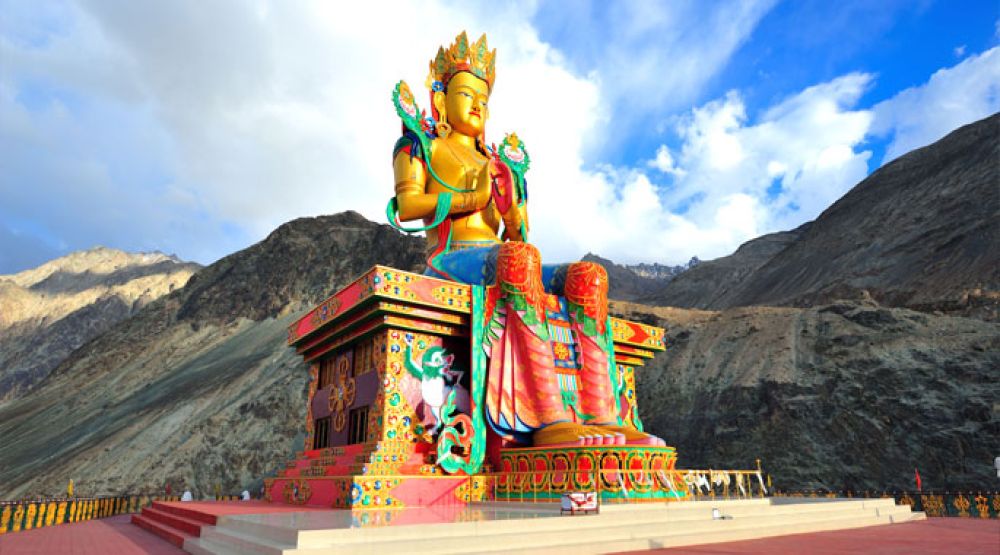

Ladakh, often referred to as 'Land of High Passes', is a region that has emerged as one of the prime destinations for adventure and culture enthusiasts around the world. The history of tourism in Ladakh, and particularly at destinations like the Lachung Temple in Diskit, is a tale of gradual discovery and appreciation of the region's unique cultural and natural heritage.
The Lachung Temple, located in Diskit - the headquarters of the Nubra Valley in Ladakh, is an ancient Buddhist monastery believed to be centuries old. It is a part of the Diskit Monastery complex, which stands as one of the oldest and largest Buddhist monasteries in the Nubra Valley. The Temple itself is adorned with beautiful murals and houses statues of guardian deities, which have been a source of spiritual guidance and inspiration for the local population for generations.
The tourism history in Ladakh can be traced back to the latter half of the 20th century, when the area was opened to tourists by the Indian government. The stunning landscapes, the rich cultural heritage, and the opportunity to witness traditional Tibetan Buddhist life attracted travellers from all corners of the globe. The Lachung Temple, with its serene ambiance and spiritual significance, became a must-visit spot for those venturing into the Nubra Valley.
In recent years, Ladakh has witnessed a new wave of tourism trends, focusing on sustainable and responsible travel. Visitors are increasingly interested in immersive experiences that respect the delicate ecological balance and rich cultural tapestry of the region. Activities like homestays, cultural exchange programs, and participation in local festivals have become popular among tourists seeking a deeper connection with Ladakh's unique way of life.
The Indian government and local organizations have also been working to promote Ladakh as an adventure tourism hotspot, with opportunities for trekking, mountain biking, and river rafting in the rugged terrain. The annual Hemis Festival, which celebrates the birth of Guru Padmasambhava, has also become a significant draw for tourists, blending spiritual celebration with cultural exhibition.
As tourism continues to grow, efforts are being made to preserve the integrity of holy sites like the Lachung Temple. Conservation programs and regulations are in place to ensure that the increase in visitor numbers does not negatively impact the monastery's ancient art and architecture. At the same time, infrastructure development is being carefully managed to maintain the natural beauty that makes Ladakh such a special destination.
Lachung Temple in Diskit stands as a pillar of Ladakh's spiritual history and a beacon for tourists seeking enlightenment and adventure in the Indian Himalayas. The growth of tourism in the region has been a journey of discovery, conservation, and connection, mirroring the enduring qualities of the Lachung Temple itself. As tourism evolves, the essence of this sacred space continues to inspire visitors from far and wide.